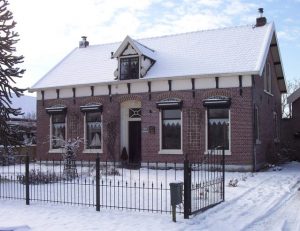
Whether you live in the Phoenix area, or in Prescott, it is important to know how to winterize your home. Winterization is the process of preparing a home for the harsh conditions of winter. It is usually performed in the fall before snow and excessive cold have arrived. Winterization protects against damage due to bursting water pipes, and from heat loss due to openings in the building envelope. One additional service that I provide as a home inspector is to watch over your vacation homes during your extended absence, and can work with you to make sure the home is winterized. But for those doing it themselves, here are some guidelines.
Plumbing System 
Water damage caused by bursting pipes during cold weather can be devastating. A ruptured pipe will release water and not stop until someone shuts off the water. If no one is home to do this, an enormous quantity of water can flood a house and cause thousands of dollars’ worth of damage. Even during very small ruptures or ruptures that are stopped quickly, water leakage can result in mold and property damage. Broken water pipes can be costly to repair.
- All exposed water pipes in cold areas, such as attics, garages, and crawlspaces, should be insulated. Foam or fiberglass insulation can be purchased at most hardware stores. Insulation should cover the entirety of a pipe.
- Plastic is more tolerant of cold expansion than copper or steel. Houses in colder climates might benefit from the exclusive use of approved plastic plumbing.
- Water supply for exterior pipes should be shut off from inside the house and then drained.
- Sprinkler systems are particularly vulnerable to cracking due to cold-weather expansion. In addition to turning them, it helps to purge the system of any remaining water with compressed air.
- Homeowners should be aware that much of the plumbing system travels through areas that are significantly colder than the rest of the house. Because it is impossible to monitor the temperature of every portion of the plumbing system, indoor air temperature should be kept high enough throughout the winter to keep pipes in any unheated places from freezing.
Leaks in the Building Envelope
- Windows that leak will allow cold air into the home. Feeling for drafts with a hand or watching for horizontal smoke from an incense stick are a few easy ways to inspect for leaks. They can be repaired with tape or caulk.
- On a breezy day, a homeowner can walk through the house and find far more leaks than they knew existed. Leaks are most likely in areas where a seam exists between two or more building materials.
- Because hot air rises into the attic, a disproportionately larger amount of heat is lost there than in other parts of the house. Like a winter hat that keeps a head warm, adequate attic insulation will prevent warm indoor air from escaping. Attic insulation should be 12 inches thick in cold climates.
- Storm doors and windows should be installed to insulate the house and protect against bad weather.

- Test the furnace by raising the temperature on the thermostat. If it does not respond to the adjustment quickly it might be broken.
- Replace the air filter if it’s dirty.
- If the furnace is equipped with an oil or propane tank, the tank should be full.
- Use a hose to remove leaves and other debris from the outdoor condensing unit, if the home is equipped with one. Protect the unit with a breathable waterproof cover to prevent rusting and freezing of its components.
- Remove and store window air conditioners when they are no longer needed. Cold air can damage their components and enter the house through openings between the air conditioner and the windowpane.
- Ceiling fans can be reversed in order to warm air trapped beneath the ceiling to recirculate. A fan has been reversed if it spins clockwise.
- The chimney should be inspected for nesting animals trying to escape the cold. Squirrels and raccoons have been known to enter chimneys for this reason.
- The damper should open and close with ease. Smoke should rise up the chimney when the damper is open. If it doesn’t, this means that there is an obstruction in the chimney that must be cleared before the fireplace can be used.
- A chimney-cleaning service professional should clean the chimney if it has not been cleaned for several years.
- The damper should be closed when the fireplace is not in use. An open damper might not be as obvious to the homeowner as an open window, but it can allow a significant amount of warm air to escape.
- Glass doors can be installed in fireplaces and wood stoves to provide an extra layer of insulation.
- If debris is left in gutters, it can get wet and freeze, permitting the formation of ice dams that prevent water from draining. This added weight has the potential to cause damage to gutters. Also, trapped water in the gutter can enter the house and lead to the growth of mold. For these reasons, leaves, pine needles, and all other debris must be cleared from gutters. This can be done by hand or with a hose.
- Missing shingles should be replaced.
- Patio furniture should be covered.
- If there is a deck, it might need an extra coat of sealer.
If you are leaving for extended periods of time and want us to check on the home during your absence, we are happy to help. As always, let us know if you have any questions about how to care for your home.
